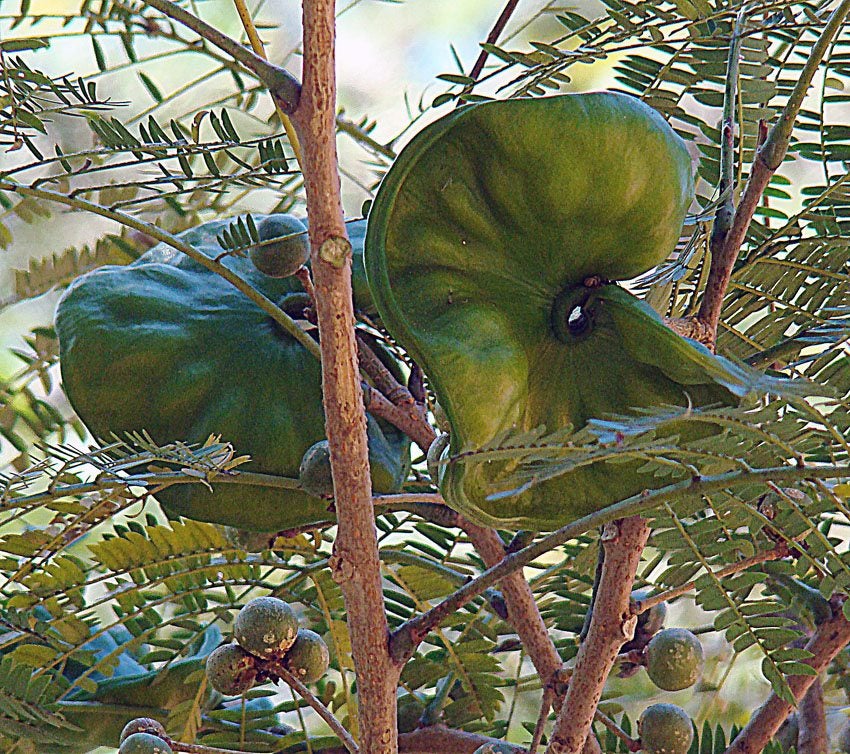What Is An Earpod Tree: Learn About The Enterolobium Ear Tree


Enterolobium earpod trees get their common name from unusual seed pods shaped like human ears. In this article, you'll learn more about this unusual shade tree and where they like to grow, so read on for more earpod tree info.
What is an Earpod Tree?
Earpod trees (Enterolobium cyclocarpum), also called ear trees, are tall shade trees with a wide, spreading canopy. The tree can grow 75 feet (23 m.) tall or more. The spiral pods measure 3 to 4 inches (7.6 to 10 cm.) in diameter. Earpod trees are native to Central America and northern parts of South America, and have been introduced to the Southern tips of North America. They prefer a climate with both a humid and dry season, but they will grow in any amount of humidity. The trees are deciduous, dropping their leaves during the dry season. They bloom before they leaf out, when the rainy season begins. The pods that follow the flowers take a year to ripen and fall from the tree the following year. Costa Rica adopted the earpod as its national tree because of its many uses. It provides both shade and food. People roast the seeds and eat them, and the whole pod serves as a nutritious food for cattle. Growing earpod trees on coffee plantations provide coffee plants with just the right amount of shade, and the trees serve as habitat for many species of reptiles, birds, and insects. The wood resists termite and fungi, and is used to make paneling and veneer.
Enterolobium Earpod Tree Info
Earpod trees aren't suited to home landscapes because of their size, but they might make good shade trees in parks and playgrounds in warm, tropical climates. Even so, they have a few traits that make them undesirable, especially in southeastern coastal areas.
- Earpod trees have weak, brittle branches that break easily in strong winds.
- They aren't well-suited for coastal areas because they don't tolerate salt spray or salty soil.
- The parts of the U.S. with a warm enough climate often experience hurricanes, which can blow over an Enterolobium ear tree.
- The pods that fall from the tree are messy and require regular cleanup. They are large and hard enough to cause a turned ankle when you step on them.
They may grow best in the Southwest where there is a distinct wet and dry season and hurricanes are infrequent.
Earpod Tree Care
Earpod trees need a frost-free climate and a location with full sun and well-drained soil. They don't compete well with weeds for moisture and nutrients. Eliminate the weeds in the planting site and use a generous layer of mulch to prevent weeds from sprouting. Like most members of the legume (bean and pea) family, earpod trees can extract nitrogen from the air. This ability means that they don't need regular fertilization. The trees are very easy to grow because they don't need fertilizer or supplemental water.
Gardening tips, videos, info and more delivered right to your inbox!
Sign up for the Gardening Know How newsletter today and receive a free copy of our e-book "How to Grow Delicious Tomatoes".

Jackie Carroll has written over 500 articles for Gardening Know How on a wide range of topics.
-
 Looking For Plants To Give You The Soft And Fuzzies? Try These 5 Fuzzy Leaf Plant Options
Looking For Plants To Give You The Soft And Fuzzies? Try These 5 Fuzzy Leaf Plant OptionsLovers of texture, drama, silver foliage and tactile plants will adore these special sensory garden additions. These fuzzy leaf plant options will leave you all aglow
By Susan Albert
-
 Get Ready For A Summer Of Hummers! Grow These Full Sun Hummingbird Plants and Flowers
Get Ready For A Summer Of Hummers! Grow These Full Sun Hummingbird Plants and FlowersIf you’re lucky enough to enjoy a sunny backyard, make sure you are maxing out on your pollinator opportunities and grow these full sun hummingbird plants and flowers
By Tonya Barnett